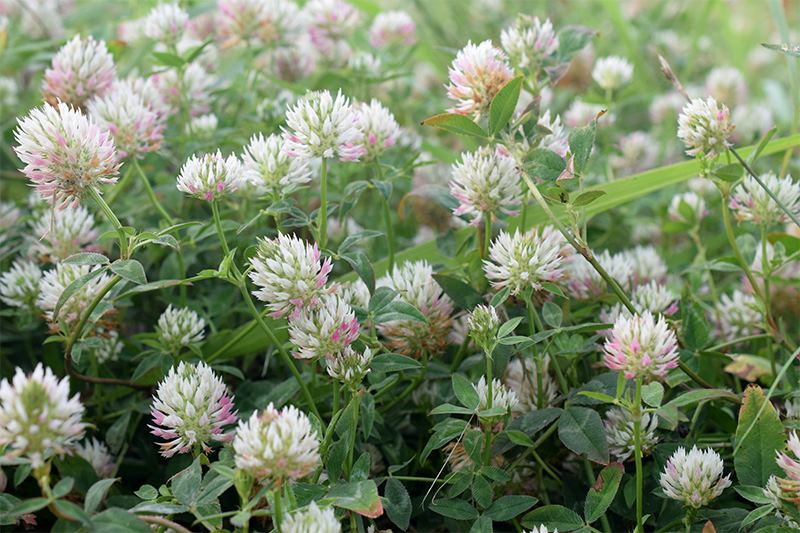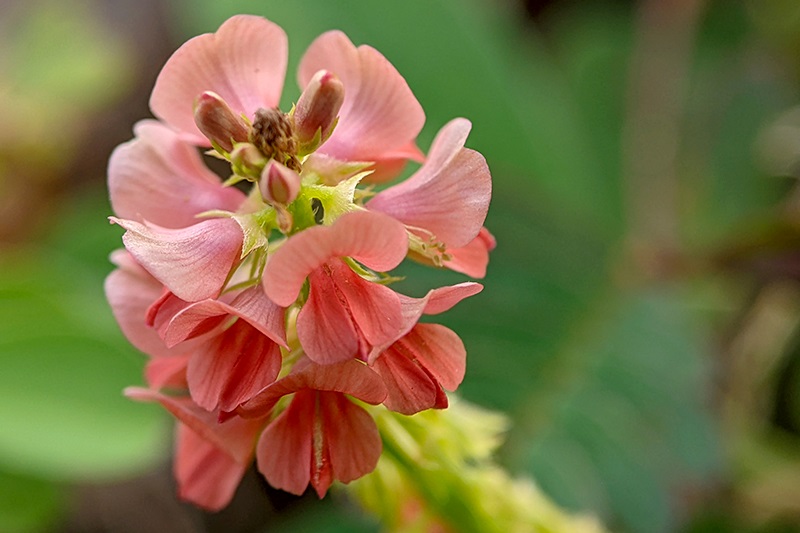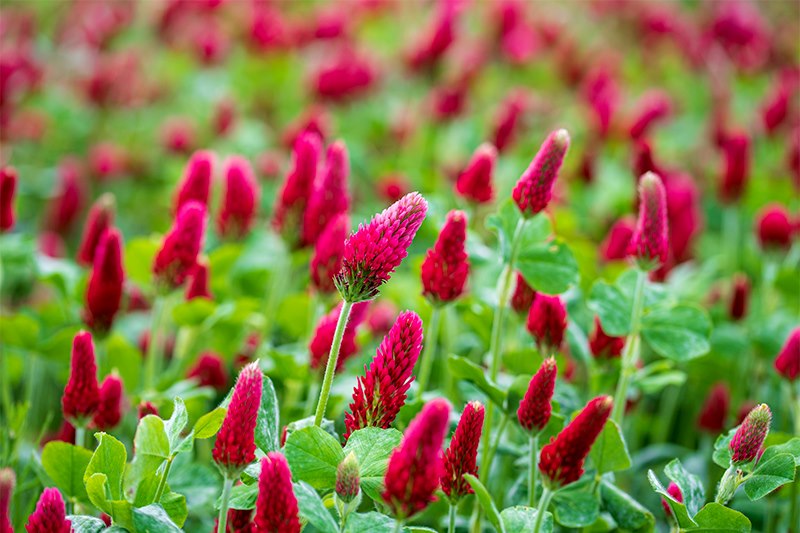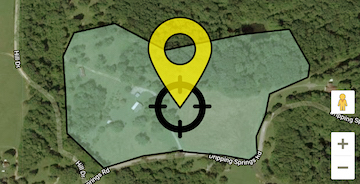Arrowleaf Clover-Trifolium vesiculosum

By Kent Kammermeyer, Senior Wildlife Biologist
Arrowleaf clover is a reseeding cool season annual legume that is often planted with small grains or ryegrass. It is native to the Mediterranean region. It has good drought tolerance and starts rapid growth following rain. Arrowleaf forage quality is high (16-20% protein) and digestible dry matter content is very high (80%) at the peak of vegetation. Its greatest limitation is its high susceptibility to viruses and fungi (more about this later).
Leaves are non-hairy and arrow-shaped one and one-half to two and one-half inches long with pronounced veins. Leaf marking ranges from none to a large white, V-shaped mark. Large flowers are initially white, later turning pink to purple. Flowering and seed production occur over a long period in spring and summer. Seeds are half the size of alfalfa and twice the size of white clover. Stems branch and curve upward to a height of two to five feet. The smooth, thick, hollow stems are often purple, becoming hard near maturity.
Adaptation/Establishment
Arrowleaf is widely grown in the southern U.S. from Georgia to Texas and northward to Oklahoma, Arkansas, Tennessee, and North Carolina. Freeze-outs occur at temperatures between 10 degrees and zero degrees. The plant is suited to a wide range of soil conditions from well to moderately well-drained and from slightly acid to slightly alkaline. It is not suited to light textured, droughty soil of low fertility or to poorly drained, wet soils.
For establishment, prepare a smooth, clean seed bed. Ideally, soil should be firmed with a cultipacker before and after planting. If not, smooth and pack with a heavy drag. Cover seed no deeper than one-fourth to one-half inch deep. Plant at a rate of 15-lbs/acre and fertilize according to soil test. In lieu of soil test, apply 300-lbs/acre of 19-19-19. Arrowleaf will tolerate soil pH between 5.0 and 7.5. However, best results are obtained when pH is between 5.8 and 6.5.
No till drilling into plowed ground and dead stands (killed by frost or chemicals such as glyphosate) can be a very viable option. Reduce rates to seven-lbs/acre when planted alone through a no-till drill. In the mid-south, plant arrowleaf in September or March when moisture is available or predicted. Deep South planting time shifts to October (as long as enough growth is produced before winter) or February so seedlings can become fully established before warm season weeds germinate. Inoculation with the correct Rhizobium bacteria (strain"O") is essential in areas where arrowleaf has not been grown. This is a different strain of bacteria from many other common clovers.
Varieties/Management
For deer managers, as with other clovers, I never recommend planting arrowleaf in a pure stand. It always makes sense to plant a legume/grass mix because they are so compatible when conservative grass seeding rates are utilized. Another factor in mixes is guarding against a species-specific crop failure (virus or fungi) with a back-up plant. Consequently, a good late winter mix would be arrowleaf (10-lbs/acre), red clover (10-lbs/acre) and oats (50-lbs/acre). Do not overdo the rate of oats or it will shade out the clovers! No till drill rates would be five lbs arrowleaf, five lbs red clover, and 30 lbs oats per acre. This mix will make it all the way through August with high production and high forage quality thus doubling as both cool and warm season forage. Fall planting mixture suggestions would include 10-lbs/acre arrowleaf, 10-lbs/acrecrimson clover, and 50-lbs/acre of wheat, oats or rye grain. I do not recommend mixing arrowleaf with annual ryegrass because of the grass's aggressive nature in year two and thereafter. Depending upon weed competition, year two stands off all planted mix will reseed with at least crimson and oats if stands are mowed in August. Arrowleaf has hard seed and may not reappear until year three or it may take a light disking in early September, depending on soil type and seed production. Late winter sown stands mowed in late August will start year two in September with either red clover and/or arrowleaf and reseeded oats.
By far the most popular variety of arrowleaf is currently Yuchi, which is a mid-maturing variety of the long season annual. Amclo is early maturing and Meechee is latest maturing. All of these are vulnerable to viruses and fungi, which may not affect the stand for several years even grown on the same ground. Arrowleaf leaves turn a distinctive purplish-red color in response to stress caused by disease or other factors.
Arrowleaf clover is an important component of several Rackmaster Wildlife Mixtures including Rackmaster Supreme Clover/Rye Blend and Rackmaster Supreme Fall Deer Mixture.



